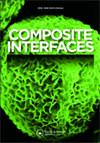通过表面改性提高耐高温碳纤维/邻苯二腈复合材料力学性能:改性方法的比较研究
IF 2.4
4区 材料科学
Q3 MATERIALS SCIENCE, COMPOSITES
引用次数: 0
摘要
摘要界面键合对耐高温碳纤维/邻苯二腈复合材料的力学性能至关重要。为了提高碳纤维/邻苯二腈复合材料的界面附着力,采用了HP302施胶、重氮化改性和氧化-重氮化改性三种表面改性方法,并进行了比较。结果表明,退浆处理对复合材料的力学性能影响不大。HP302改性和重氮化改性均能提高材料的力学性能,而氧化-重氮化改性则显著降低材料的力学性能。在这些表面改性方法中,重氮化处理得到的碳纤维/酞腈复合材料在室温和高温下的力学性能最好。其中,抗弯强度分别为345 MPa(室温)、525 MPa(300℃)和442 MPa(400℃),分别比原始复合材料提高了47%、302%和281%。层间剪切强度分别为33 MPa (RT)、26 MPa(300℃)和27 MPa(400℃),均为原始材料的2倍以上。关键词:碳纤维酞腈树脂复合材料表面改性机械性能披露声明作者未报告潜在利益冲突。补充数据本文补充数据可通过https://doi.org/10.1080/09276440.2023.2262253Additional info在线获取。基金资助:湖南省重点研究与发展计划(项目编号2018GK2062)。唐骏感谢国家自然科学基金(52003295)的资助。本文章由计算机程序翻译,如有差异,请以英文原文为准。
Improving mechanical properties of high-temperature resistant carbon fiber/phthalonitrile composites via surface modification: a comparative study on modification methods
ABSTRACTThe interfacial bonding is of essential importance for the mechanical properties of high-temperature resistant carbon fiber/phthalonitrile composite materials. To promote the interfacial adhesion of carbon fiber/phthalonitrile composites, three surface modification methods, namely HP302 sizing, diazotization modification, and oxidation-diazotization modification, were applied and compared. The results showed that the de-sizing treatment barely affected the mechanical properties of the composites. Both re-sizing with HP302 agent and diazotization modification improved the mechanical properties, while the mechanical properties were drastically decreased via the oxidation-diazotization modification. Among these surface modification methods, the diazotization treatment derived the best mechanical properties of carbon fiber/phthalonitrile composites both at room and high temperature. Specifically, the flexural strengths were 345 MPa (RT), 525 MPa (300°C), and 442 MPa (400°C), which were 47%, 302%, and 281% higher than those of the pristine composites. The interlaminar shear strengths were 33 MPa (RT), 26 MPa (300°C), and 27 MPa (400°C), which were all over twofold than those of the original counterparts.KEYWORDS: Carbon fiberphthalonitrile resincomposite materialssurface modificationmechanical properties Disclosure statementNo potential conflict of interest was reported by the author(s).Supplemental dataSupplemental data for this article can be accessed online at https://doi.org/10.1080/09276440.2023.2262253Additional informationFundingThis work was supported by the Key Research and Development Program of Hunan Province, China (Great numbers 2018GK2062). Jun Tang would like to acknowledge the financial support from National Natural Science Foundation of China with grant No. 52003295.
求助全文
通过发布文献求助,成功后即可免费获取论文全文。
去求助
来源期刊

Composite Interfaces
工程技术-材料科学:复合
CiteScore
5.00
自引率
3.80%
发文量
58
审稿时长
3 months
期刊介绍:
Composite Interfaces publishes interdisciplinary scientific and engineering research articles on composite interfaces/interphases and their related phenomena. Presenting new concepts for the fundamental understanding of composite interface study, the journal balances interest in chemistry, physical properties, mechanical properties, molecular structures, characterization techniques and theories.
Composite Interfaces covers a wide range of topics including - but not restricted to:
-surface treatment of reinforcing fibers and fillers-
effect of interface structure on mechanical properties, physical properties, curing and rheology-
coupling agents-
synthesis of matrices designed to promote adhesion-
molecular and atomic characterization of interfaces-
interfacial morphology-
dynamic mechanical study of interphases-
interfacial compatibilization-
adsorption-
tribology-
composites with organic, inorganic and metallic materials-
composites applied to aerospace, automotive, appliances, electronics, construction, marine, optical and biomedical fields
 求助内容:
求助内容: 应助结果提醒方式:
应助结果提醒方式:


